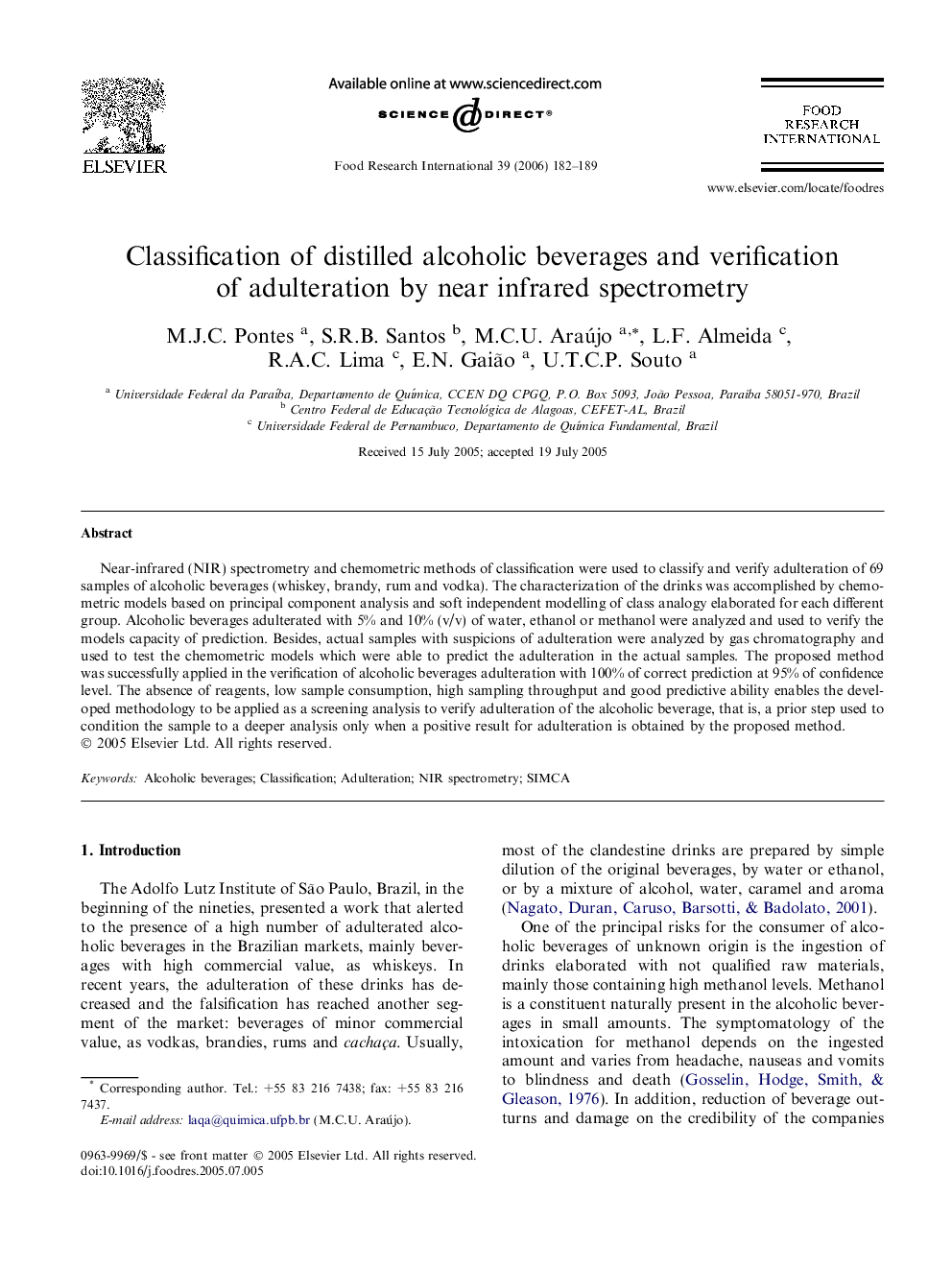| Article ID | Journal | Published Year | Pages | File Type |
|---|---|---|---|---|
| 4563169 | Food Research International | 2006 | 8 Pages |
Near-infrared (NIR) spectrometry and chemometric methods of classification were used to classify and verify adulteration of 69 samples of alcoholic beverages (whiskey, brandy, rum and vodka). The characterization of the drinks was accomplished by chemometric models based on principal component analysis and soft independent modelling of class analogy elaborated for each different group. Alcoholic beverages adulterated with 5% and 10% (v/v) of water, ethanol or methanol were analyzed and used to verify the models capacity of prediction. Besides, actual samples with suspicions of adulteration were analyzed by gas chromatography and used to test the chemometric models which were able to predict the adulteration in the actual samples. The proposed method was successfully applied in the verification of alcoholic beverages adulteration with 100% of correct prediction at 95% of confidence level. The absence of reagents, low sample consumption, high sampling throughput and good predictive ability enables the developed methodology to be applied as a screening analysis to verify adulteration of the alcoholic beverage, that is, a prior step used to condition the sample to a deeper analysis only when a positive result for adulteration is obtained by the proposed method.
